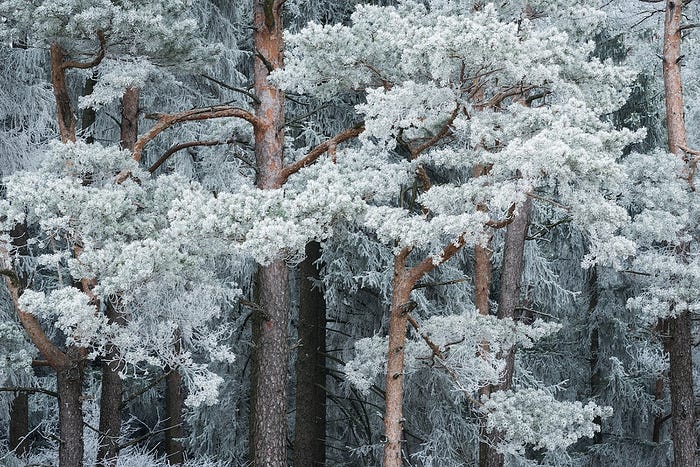
Waking up today to a freezing morning after a major snow storm, I found Boston to be out of the habitable zone around the Sun. My early jog passed by new white structures of ice and snow, glowing in the red light of sunrise. The landscape acquired the beauty of an alien world with a silver Moon pointing its lit side towards the rising Sun.
This reminded me that the Universe is by now a cold place, just 2.725 degrees above absolute zero. We are blessed to be warmed by a furnace, a nuclear reactor of hot gas to which we are exposed every morning. But we arrived late to the cosmic scene, 13.8 billion years after the Big Bang. When the Universe was merely 15 million years old at a redshift of 110, it had room temperature — as I noted in a paper. Back then, cosmic summer had been all around us for millions of years. Since then, the universe expanded and cooled dramatically. It is currently freezing in intergalactic space.
If we were to venture away from the Sun, we would get closer to the freezing cosmic conditions. In the outskirts of the solar system there are many icy objects. Some of them appear as long-period comets when they approach the Sun and their ice evaporates, resulting in a tail of vapor and dust glowing in the sunlight. Fred Whipple, whom I met when I arrived at Harvard three decades ago, was first to suggest that comets are “dirty snowballs” or icy rocks. He came with the idea after going through the slush at Harvard Square on a winter day. A passing star can kick the icy rocks gravitationally and send them to interstellar space. Indeed, we saw a comet from another star system in the form of the second interstellar object, 2I/Borisov. The first interstellar object, `Oumuamua, was something else.

On large enough icy objects, the frozen surface may provide a womb — nurturing life in the liquid water underneath. The water could be warmed up by gravitational tides from a companion or by radioactivity of rare elements. The subsurface liquid water would have the potential for hosting life, as we showed in a paper that I wrote with my former postdoc, Manasvi Lingam. If so, these objects — which appear frozen to an outside observer, might actually be the most abundant hosts of life in the Solar system. Like the empty streets I jogged through this morning, life in freezing conditions might be hidden from view under the veil of ice. We could find evidence for subsurface life from organic molecules in the geysers that originate from the cracks in the ice on the surface of Saturn’s moon, Enceladus, or Jupiter’s moon, Europa.
It is unlikely that subsurface life would develop intelligence. But if it did, we might see unexpected lights emanating from the ice. There are good reasons for why our technological civilization developed on land, but dolphins appear fairly intelligent. And given that human history often wastes resources on destructive wars, as the latest news in Ukraine, I am not convinced that humanity is the best incarnation of intelligence that nature has to offer. It would make a lot of sense to search for surprises, even if they are separated from us by a layer of ice.
We can also look more closely at interstellar objects. In the coming months, the Galileo Project will assemble its first telescope system on the roof of the Harvard College Observatory, in search for extraterrestrial technological relics. My hope in leading this project is that an extraordinary finding might convince humans to look up for inspiration. The Galileo Project follows Oscar Wilde’s vision: “We are all in the gutter, but some of us are looking at the stars.”
Finding a smarter kid on our cosmic street will not only provide us with the humility we so desperately need, but will also supply the warmth of having some company. Otherwise, the cold truth of isolated existence resembles my jog through the snow in utter loneliness — with only the sound of ice rubbing against my sneakers.

This morning also marks the 60th time the Earth circled the Sun since the day I was born. Here’s hoping that in my remaining years I will have an opportunity to take part in a space flight away from the Sun. This will allow me to examine icy worlds that are far more exotic than the one I witnessed today. Besides, as I age and approach the end of my personal journey, freezing in space would be a good way to connect to the cosmos at large and appreciate the faint glimmer of warmth left in it from the glorious moment of the Big Bang.
ABOUT THE AUTHOR
Avi Loeb is the head of the Galileo Project, founding director of Harvard University’s — Black Hole Initiative, director of the Institute for Theory and Computation at the Harvard-Smithsonian Center for Astrophysics, and the former chair of the astronomy department at Harvard University (2011–2020). He chairs the advisory board for the Breakthrough Starshot project, and is a former member of the President’s Council of Advisors on Science and Technology and a former chair of the Board on Physics and Astronomy of the National Academies. He is the bestselling author of “Extraterrestrial: The First Sign of Intelligent Life Beyond Earth” and a co-author of the textbook “Life in the Cosmos”, both published in 2021.
